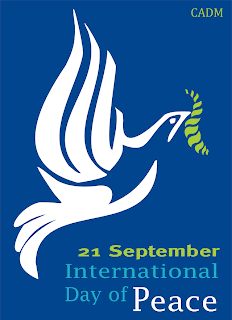Peace! Peace!! Peace!!!
Peace! Peace!! Peace!!!
People often ask “Why teach about peace? Children know what peace is”. In fact research tells us that, while most children have concrete ideas about what war is, their ideas about peace are often vague, with peace simplistically seen as the opposite of war. Furthermore, peace is often thought of as weak, passive, dull and boring. Most learners have little understanding of peacemaking processes and a strong sense of powerlessness concerning the future, consequently they often express little hope for lasting peace. Looking at our classrooms, our schools and our communities, there is clear evidence that violence is escalating while peace eludes us. Peace needs to be concretized and presented to learners as something both tangible and valuable. Something worth learning about and working towards, something of value. Peace is likely to thrive in a community that cares, co-operates, communicates and values diversity - so this becomes a realistic goal for our classrooms and an inspiring ideal for our communities. Although working in different ways and spheres, both organisations were driven by a common vision to develop school going youth into informed, critically thinking individuals, tolerant of the views of others and empowered to deal with conflicts without resorting to the use of violence. This project was an attempt to extend the capacity of both organisations, thereby maximising their respective impact. With limited resources and an enormous target audience it was obvious that this material would have to stand alone and without pre-training of teachers, for we could not provide training to every school in the province.

The outcome was the development of “Peace Begins with Me”, a teaching aid in the form of a Holdall Portable Lectern which provides a step by step life skills programme for Grades 4, 5 and 6. Children of this age are young enough to be influenced by the ethics of peace values yet old enough to understand concepts that offer a lifetime of skills. The teaching pack is housed in a large cardboard folder and comes in the form of a sturdy portable lectern, which serves as both educators guide and learners material. When in use, the picture to be used as a lesson stimulus is on the front and faces the class, while the lesson guide is on the back facing the educator. It also includes four text-based posters which deal with ways of working together whilst ensuring your rights. These posters are put up during relevant lessons and then remain on the walls until the final phase of assessment of the activity.










